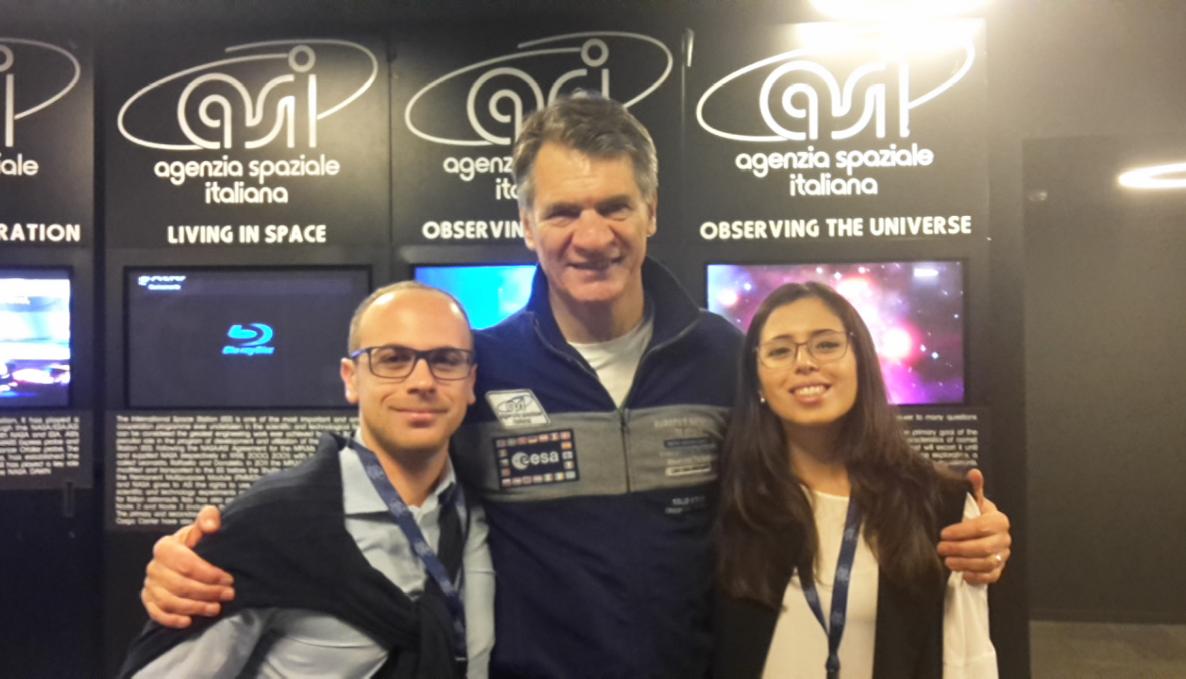Nanotechnology applications in Space: preventing muscle deterioration in orbit could tackle muscle wasting diseases on Earth - the “Nanoros” project presentation in the presence of astronaut Paolo Nespoli

Preventing muscle degeneration to which astronauts are being subjected means identifying targets and developing strategies to tackle muscle-degenerative diseases on Earth. This is the goal of the "Nanoros" project, which researchers of Sant'Anna School BioRobotics Institute are working on at headquarters of the Italian Institute of Technology MicroBioRobotics Center. The "Nanoros" project was presented at the Italian Space Agency headquarters (ASI), to identify scientific and technological challenges of the new space mission with the Italian astronaut Paolo Nespoli.
"Nanoros" has been selected by the Italian Space Agency (ASI) and is intended to bring to space, for the first time, the cerium oxide nanoparticles "nanoceria"; an advanced smart material which proved to have both pro-oxidant and anti-oxidant effects on different cell systems. Astronaut Paolo Nespoli during next ASI mission will be able to study how the material reacts to the space environment, and Nanoros project partners, including the company Kayser Italy - Livorno will provide advanced industrial support.
"Nanoros" will also focus on nanotechnology applications. In particular, the effects of nanoparticles of cerium oxide ("nanoceria") will be investigated. The advanced smart material has been studied in biomedical research to prevent those diseases whose onset is linked to increased production of toxic molecules called free radicals. The "nanoceria" antioxidant effects will be tested on a model of differentiated muscle cells in microgravity conditions and in the presence of strong cosmic rays. Bone-density loss and heavy doses of radiation are in fact the largest problems that are faced by astronauts during their long-term space travel.
“Nanoceria" has already shown promising results in the treatment of Parkinson's disease and obesity. The experiment related to the Nanoros project will be conducted by the Italian astronaut Paolo Nespoli on the space station, as an orbiting laboratory, with the financial support of the Italian Space Agency and advanced research equipment developed by the space industry company Kayser Italy- Livorno.
Gianni Ciofani, associate professor at the Polytechnic University of Turin, affiliate professor at Sant’Anna School BioRobotics Institute, acts as the “Nanoros” project coordinator. The research team includes Attilio Marino, neurobiologist, and Giada Gianchi, biotechnologist, both researchers of Sant’Anna School Centre for Micro-BioRobotics IIT in Pontedera.
Here the "Nanoros" official blog, developed by the Micro-BioRobotics IIT researchers.
Cover photo (from left to right): Attilio Marino,Post Doctoral Fellow - Center for Micro-Biorobotics of Istituto Italiano di Tecnologia IIT@SSSA; Smart Nanomaterials Team directed by Gianni Ciofani; Paolo Nespoli; Alice Rita Salgarella, PhD student - Sant'Anna School Biorobotics Institute; Surgical Robotics and Allied Technologies Team directed by Arianna Menciassi.



